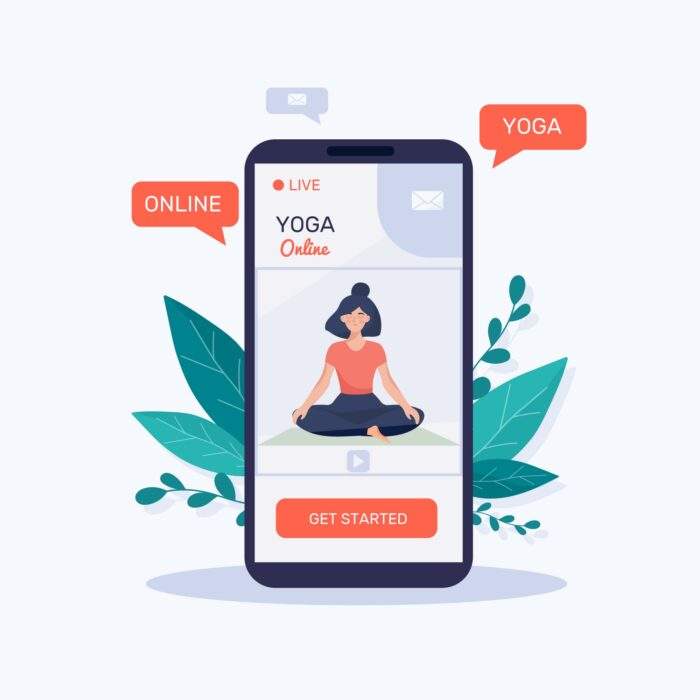How to Develop a Mental Health App

In recent years, more and more individuals have begun to acknowledge the significance of caring for their mental health. This has prompted new approaches, including mental health apps, to meet the growing need for information and assistance with these issues.
These applications provide resources for fostering mental health and providing emotional support to people in various situations easily accessible and easy.
In this detailed tutorial, you will learn the methodology of creating an app for mental health:
- Identify the Purpose and Target Audience
The mental health app’s goals should be clear. Anxiety, depression, and other mental health issues may be targeted by offering stress management, relaxation information, and techniques.
It’s also vital to indicate who you’re writing for, such as individuals who wish to improve their mental health, learn how to help themselves, or require support with specific mental health difficulties. You can build an app to meet users’ needs if you know why and for whom you’re developing it.
- Conduct Market Research
Market research is essential for making a helpful app for mental health. It entails researching the state of the market, seeing potential rivals, and learning about end-user tastes and requirements. Conducting in-depth market research will reveal existing mental health applications’ features, functionality, and user reviews.
By probing into app users’ brains, you’ll discover what qualities they value most and where other apps fall short so you can fill those holes with your own. Market research on the idea’s demand and economic viability informs your app’s development and advertising strategy.
- Define Core Features and Functionality
A mental health app must explicitly outline its core features and functions to be valid. Monitoring mood, meditation, journaling, goal planning, reminders, access to mental health resources and publications, and a social support network may be helpful.
The app’s users and purpose must determine these components. Professional Android mobile app developers should emphasize features that promote consumers’ mental wellness. Establishing precise specifications for the app’s core features and functionalities is vital for a solid app that satisfies customers’ expectations.
- Design User Interface and User Experience (UI/UX):
The success of a mental health app depends on the quality of its user interface (UI) and user experience (UX). An app’s UI should reflect its goal and target audience with simple navigation, engaging pictures, and a consistent color palette.
The UX design should make it easy for users to do their intended tasks in the software. Think about undertaking user research and testing so you may learn from your audience’s experiences and develop your UI/UX accordingly. Users are likely to stick with an app with a well-designed user interface and user experience.
- Develop the Backend and Database
Building the server-side components and the data storage architecture for a mental health app falls under “backend and database development.” Ensure that data processing, user authentication, and server-side processes are handled by selecting suitable technologies and frameworks.
Create a safe and scalable database structure for storing user details, app data, and other essential information. Maintain compelling back-and-forth between the app’s front- and back ends so that the app’s basic features may be used as intended.
You should adopt stringent security procedures and perform frequent database backups to safeguard private user information. The app’s reliability, speed, and capacity to handle data depend on how effectively its backend and database have been created.
- Implement Features and Functionality
The next step is implementing the features and functionality that will make the mental health app unique. Start coding and building the essential components by breaking each part into smaller jobs.
Verify that the implementation corresponds to the UI/UX design and works harmoniously with the backend and database. Maintain a steady stream of tests on the features to find and repair any faults or usability problems as development proceeds.
Focus on getting the fundamentals in place first, testing and refining as you go to ensure optimal performance and usability. Add new features and capabilities to the app over time, ensuring each improves the user experience and serves the app’s primary goal.
- Ensure Data Privacy and Security
When developing a mental health app, taking precautions to protect users’ privacy and confidentiality is crucial. Protect sensitive user data using advanced security measures, including encryption and safe data storage methods.
Use user permission before collecting or using personal information, as the General Data Protection Regulation (GDPR) requires. Keep an eye out for security flaws by conducting frequent audits and penetration tests.
Protect sensitive information by requiring users to go through authentication before gaining access. Build user trust and confidence by giving their personal information and mental health records priority at all times throughout the app’s development.
- Integrate Analytics and Tracking
An app for mental health may get invaluable information about users’ habits and effectiveness using analytics and monitoring technologies. Gather information on user demographics, feature use, and level of engagement with the help of analytics tools.
Measure how long users spend in the app, how they navigate between screens, and how many they end up using. Use this information to find trends, user preferences, and optimization opportunities.
Use this information to make educated judgments, enhance existing functionality, and tailor your offering to each user. This relationship allows the app to suit users’ needs better and give more excellent mental health care.
- Test, Iterate, and Optimize
An essential part of making mental health software is testing, iterating, and improving it. With careful testing, you can find bugs, problems with the software’s work, and places where it slows down.
Trying an app’s stability and usefulness on different hardware and software systems is essential. Collect information from beta testers and utilize that data to make incremental adjustments based on their input.
Maintain the app’s speed, responsiveness, and stability for the best possible experience. Fix bugs and add new features consistently by using analytics and user input. Testing, iteration, and optimization may improve the app’s ability to promote positive mental health.
- Seek Professional Expertise
Working on a mental health app requires professional advice. Work with mental health professionals like therapists and psychologists to ensure the app’s content and features are evidence-based and best practices. Their suggestions may enhance the app’s appearance, functionality, and resources.
Talking to attorneys and regulators can help you comply with mental health service and patient data protection laws. Professionals ensure the app’s integrity, efficiency, and ethical procedures, which enhances its overall effect and user trust.
- Launch and Market the App
The app’s success and widespread usage depend on its release and promotion to the public. Create an all-encompassing approach to advertising that uses a wide range of tools, including social media, internet advertising, influencer collaborations, and press releases.
Raise people’s interest by explaining the app’s many advantages. You could use a freemium business model or special offers to attract customers. Build trust and credibility through user reviews and star ratings.
After the mental health development program has been released, it must be constantly evaluated for improvements based on user input. Collaborate with other groups working in mental health to increase your reach and effectiveness.
- Gather and Incorporate User Feedback
You must listen to your users and implement their suggestions for a better mental health app. Ask for user input by implementing in-app rating and review systems. Be receptive to their comments, questions, and life stories.
Prioritize upgrades and new features based on your analysis of the words. Contact people through various mediums (forums, social media, etc.) to learn about their ever-changing requirements.
Maintain consistent communication with users on changes and upgrades. By incorporating feedback from actual users, you may tailor the app to their specific needs, increasing the likelihood that they’ll find it valuable and enjoyable.
Conclusion
Creating an app for mental health needs much preparation, investigation, and implementation. An effective app for improving one’s mental health may be made by determining its goal, intended users, and central features and then considering its usability, safety, and confidentiality.
Maintaining the app’s usefulness in today’s ever-changing digital world requires constant iteration, optimization, and user input. Remember that helping those who want to better their mental health should be the ultimate objective.







